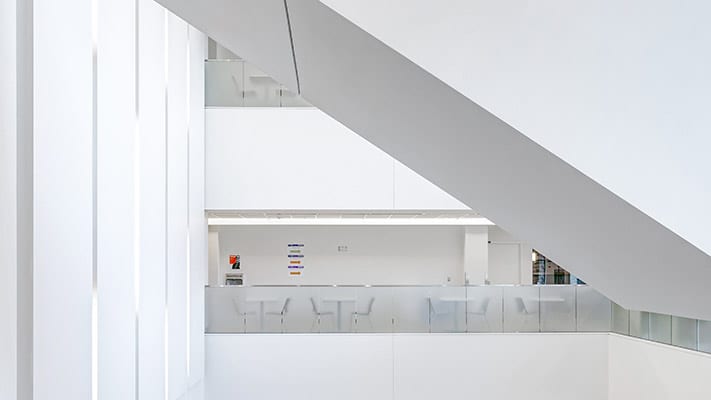
Updated October 17, 2024
Infection control during hospital construction is non-negotiable. With vulnerable patients and staff at risk, healthcare facilities need robust, reliable solutions for containing dust and debris. Operating rooms, ICUs, NICUs, burn units, sterile processing departments, and many other areas—they all share a common goal during renovations: keeping building occupants safe.
Traditional methods like drywall and plastic sheeting just don’t cut it. Both pose significant risks, potentially allowing dust and debris to infiltrate critical spaces. Fortunately, the industry has evolved far beyond these outdated approaches.
Let’s explore how dust barriers and temporary construction walls offer a superior, safer solution—especially in healthcare facilities adhering to ICRA standards.
The Importance of ICRA Compliance
The Infection Control Risk Assessment (ICRA) protocol is crucial for healthcare facilities during any renovation or construction project. ICRA guidelines are designed to prevent the spread of airborne pathogens in environments with vulnerable populations, such as operating rooms or isolation wards. Effectively containing dust and debris is essential to minimizing infection risk.
Both drywall and plastic sheeting fall short of meeting these high standards. Drywall installations create noise, release dust, and often require lengthy setup and tear-down times. Plastic sheeting, while less intrusive, offers minimal durability and can easily puncture or tear, potentially contributing to infection spread. Worse, they’re both a single-use solution, leading to significant waste and increased costs.
Why Traditional Dust Control Methods Fail
All healthcare facilities face the threat of airborne contaminants. For an immunocompromised patient, exposure to airborne mold like Aspergillus can lead to severe, life-threatening infections.
Traditional dust solutions not only allow particulates to escape but also introduce new hazards during installation, from dust clouds to debris.
Plastic sheeting offers minimal protection, often requiring constant maintenance to remain effective, while drywall is disruptive, creating significant noise and dust pollution during installation. Neither method provides the level of safety required for sensitive environments.
A Superior Solution: STARC's Temporary Construction Walls
STARC offers a game-changing alternative with its full line of prefabricated temporary wall systems. These temporary construction walls exceed ICRA Class IV/V requirements, making them ideal for healthcare environments. Here’s why they outshine traditional methods:
- No Dust, No Noise: Unlike drywall, STARC panels are engineered for fast, quiet installation—up to 100 feet of temporary construction wall can be set up in under an hour without creating debris or disruption.
- Airtight Seals: With 360-degree inter-panel seals, integrated tongue-and-groove connections, and foam gaskets, STARC walls create an airtight barrier that prevents dust and pathogens from escaping containment zones.
- Reusable and Sustainable: Unlike drywall, which is single-use and wasteful, STARC walls can be reused over and over for years, offering significant cost savings and environmental benefits. When the panels reach the end of their lifecycle, they are recyclable.
Beyond Healthcare: Dust Barriers for Commercial Spaces
STARC’s temporary construction walls aren’t just for hospitals. They are equally effective in commercial settings such as airports and data centers, where dust and hazardous materials need to be isolated to protect workers and building occupants.
Traditional drywall setups are labor-intensive and wasteful, leading to unnecessary downtime. STARC's temporary construction walls offer a cleaner, faster, and safer alternative that reduces downtime and ensures compliance with safety regulations.
Even in office renovations, where maintaining a professional appearance during construction is critical, STARC provides dust barriers that look like finished walls, keeping disruption to a minimum.
Conclusion
In environments where safety and infection control are paramount, traditional methods like drywall and plastic sheeting simply aren’t enough. STARC’s reusable, airtight dust barriers and temporary construction walls provide a smarter, more sustainable solution that keeps contaminants contained, protects sensitive environments, and meets the highest standards of infection control.
Ready to safeguard your facility, save time, and reduce costs with superior temporary construction walls? Contact STARC today for a custom consultation.
Interested in More Information on STARC Systems?
